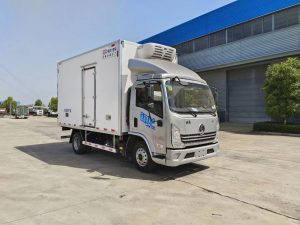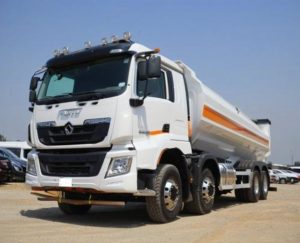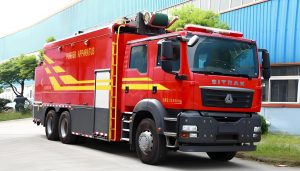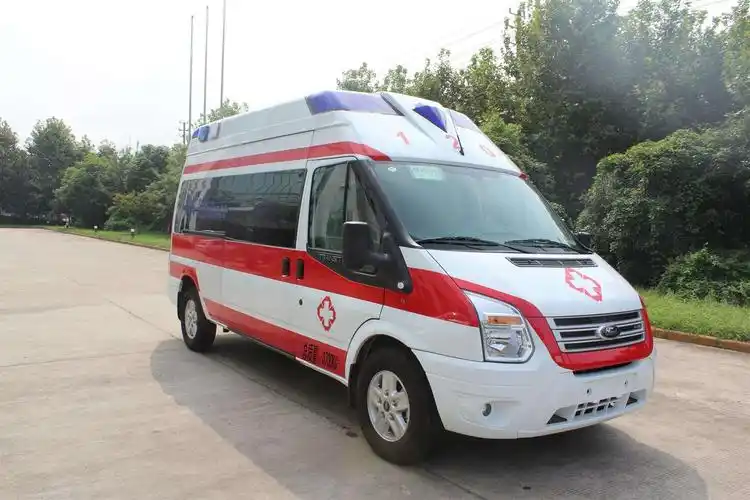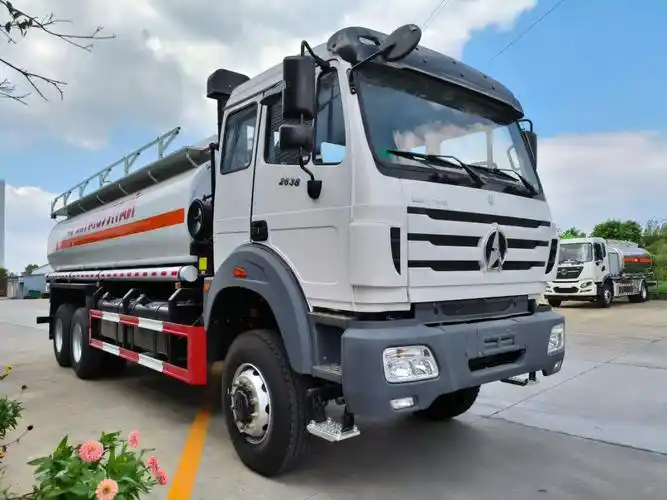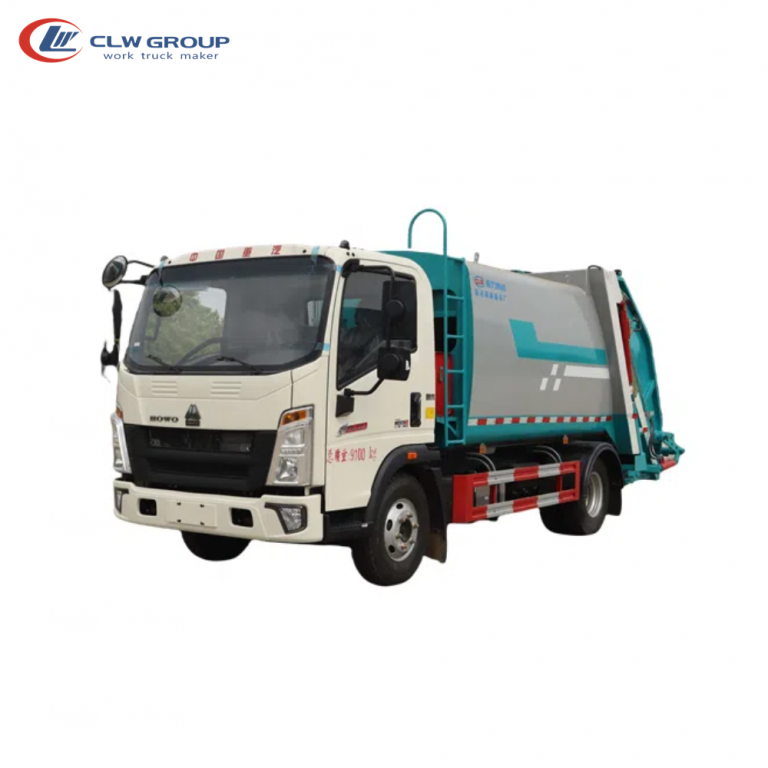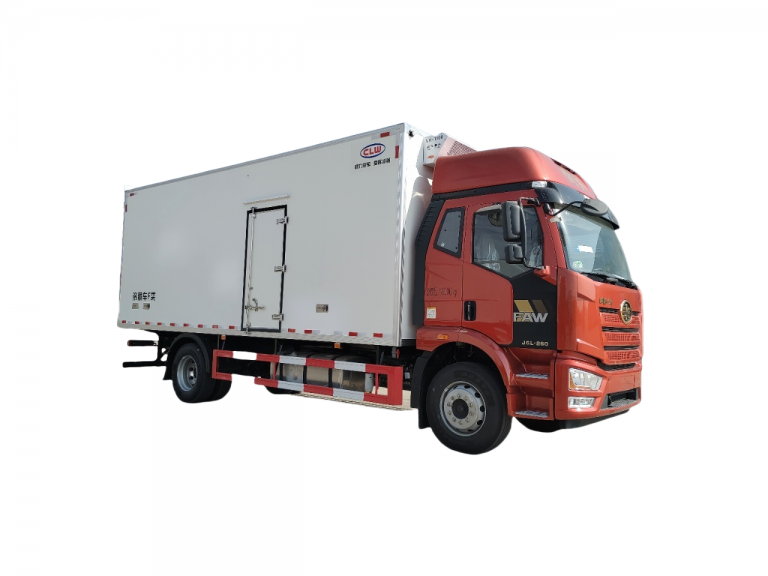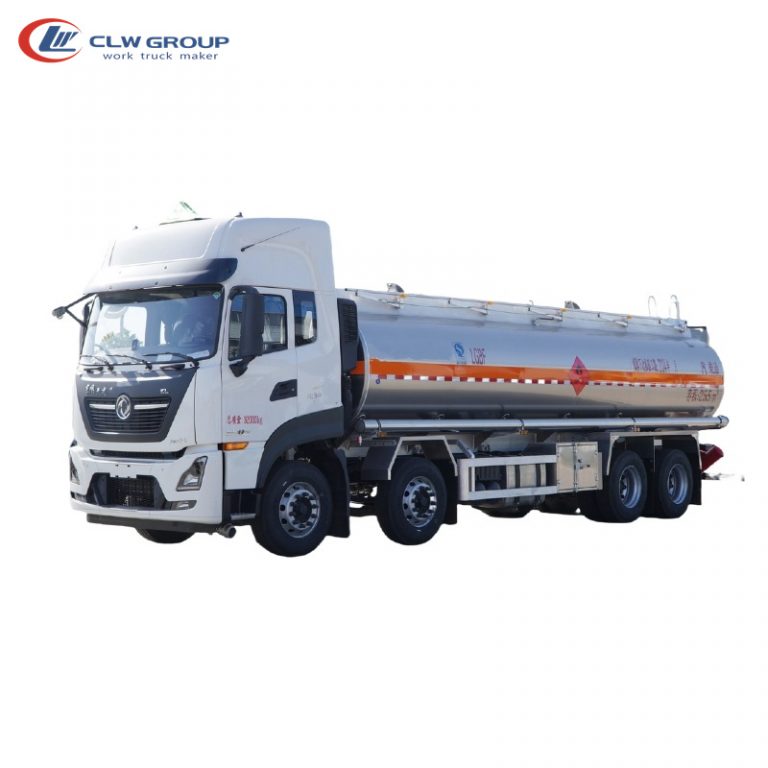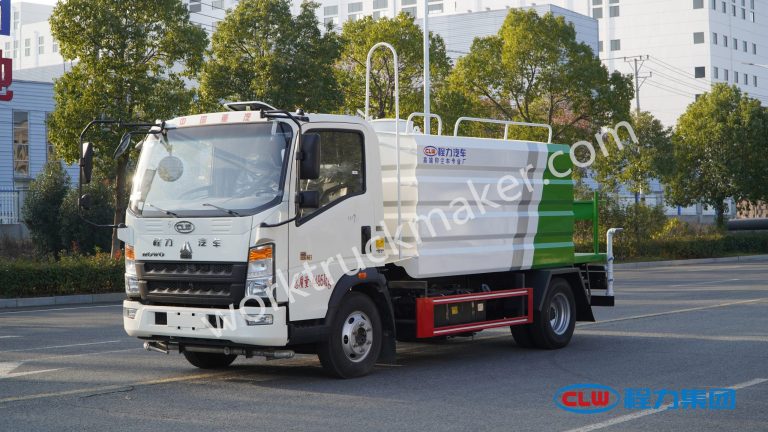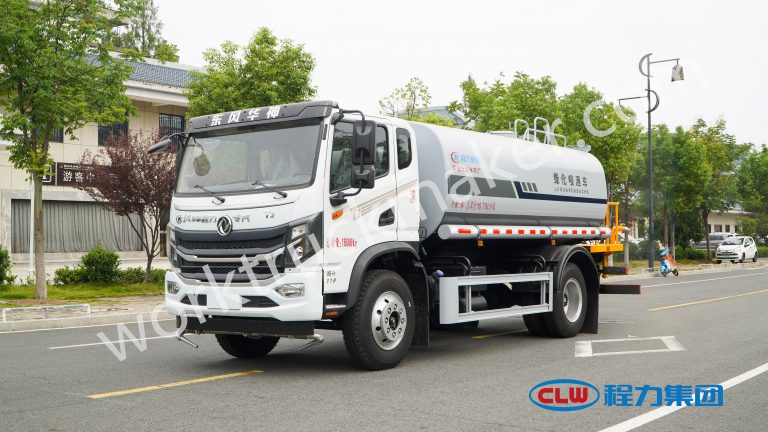Table of Contents
Toggle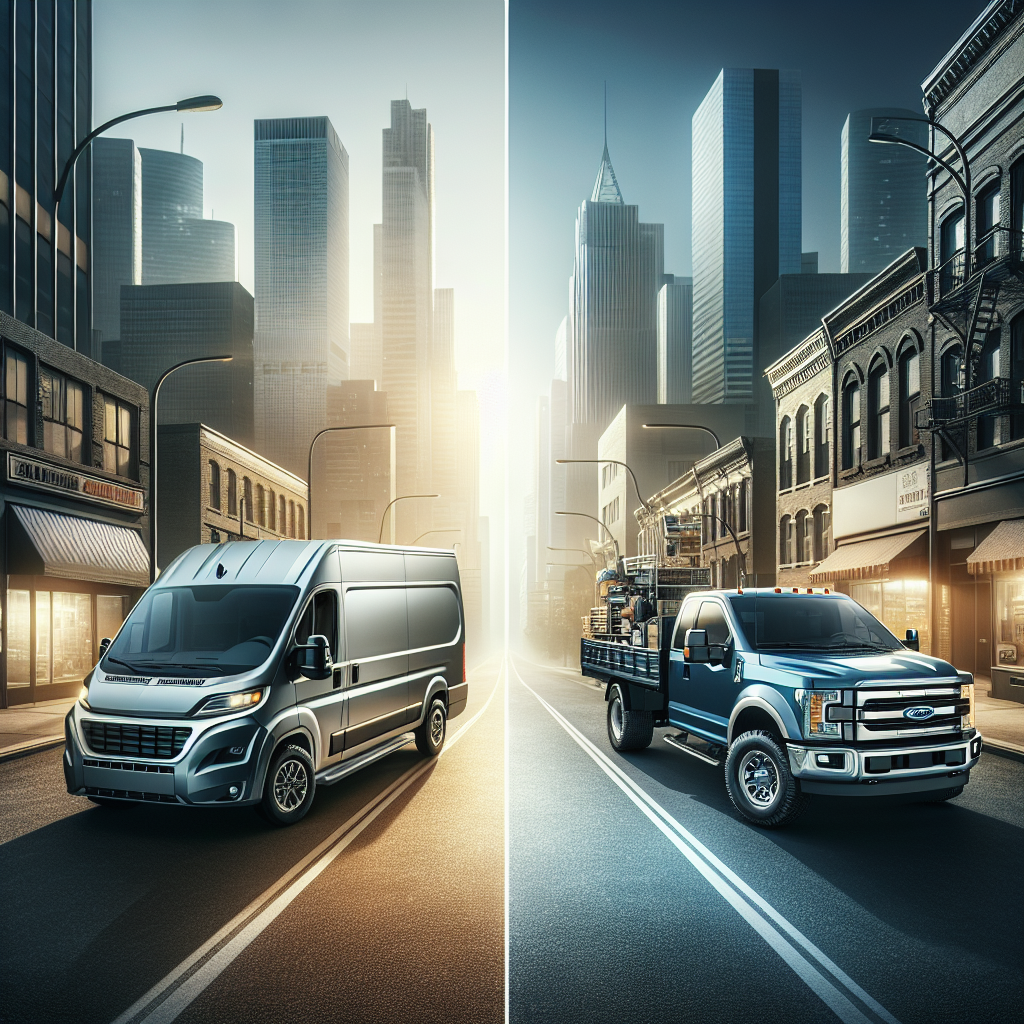
When it comes to running a business that requires transporting goods or equipment, choosing the right vehicle is crucial. Van trucks have become a popular choice for many companies, offering a balance of cargo capacity, maneuverability, and versatility. These vehicles, also known as dry vans or vantrucks, provide enclosed storage space that protects cargo from the elements while allowing for easy loading and unloading.
Selecting the best van truck for your business involves considering various factors, including the type of cargo you’ll be hauling, the distances you’ll be traveling, and your budget. This article will explore different types of van trucks and pickup trucks, compare their cargo capacities, and examine aspects such as maneuverability, fuel efficiency, and customization options. We’ll also look at cost considerations to help you make an informed decision that aligns with your business needs and financial goals.
Types of Van Trucks
Van trucks come in various configurations to suit different business needs. The three main types are box trucks, cargo vans, and cutaway vans. Each type has its unique features and advantages, making them suitable for specific industries and applications.
Box Trucks
Box trucks are built on a truck chassis with a separate cab and cargo area. They feature a box-shaped cargo space with straight-paneled sides, offering more room than cargo vans. These vehicles typically have large rear roll-up doors for easy access to the cargo area, with some models also featuring a vertical door on the side of the box.
Key features of box trucks include:
- Sizes ranging from 10-12 feet for small box trucks to up to 26 feet for larger models
- More cargo space compared to cargo vans
- Squared, straight walls that facilitate easier upfitting
- Rolling rear door providing a larger opening for loading and unloading cargo
Box trucks are ideal for businesses that require substantial enclosed storage space and frequent loading and unloading of large items.
Cargo Vans
Cargo vans are built on a van chassis and come in various body styles, sizes, wheelbases, and roof heights. They offer a balance between cargo capacity and maneuverability, making them suitable for a wide range of industries.
Notable characteristics of cargo vans include:
- Sizes ranging from small, low-roof models to larger, high-roof versions rivaling small busses
- Slightly curved walls with barn-style rear cargo doors and sliding or barn-style side cargo doors
- Access to the cargo space from the cab
- Better fuel economy due to their smaller size and engine
- Smoother driving experience, handling similar to passenger vans
Cargo vans are versatile vehicles used in industries such as deliveries, construction, and technical services. They provide ample space for customization and organization, with many aftermarket products available for storage solutions.
Cutaway Vans
Cutaway vans, often referred to as box trucks, feature a passenger compartment that is completely separate from the cargo area. These vehicles have a truck-like front end with the driver sitting behind the engine.
Key aspects of cutaway vans include:
- Seating for the driver and up to two passengers
- Customizable by second-stage manufacturers for specialized uses (e.g., ambulances, recreational vehicles, small school busses)
- More engine options compared to cargo vans
- Ability to be outfitted with exterior storage bins, making them popular among service professionals
Cutaway vans are preferred by businesses that require a clear separation between the driver’s compartment and the cargo area, as well as those needing extensive customization options.
Each type of van truck offers unique advantages, allowing businesses to choose the most suitable option based on their specific needs, cargo requirements, and operational preferences.
Types of Pickup Trucks
Pickup trucks are classified into different categories based on their Gross Vehicle Weight Rating (GVWR), which represents the maximum weight a vehicle can safely handle, including its own weight, passengers, cargo, and fuel. The Federal Highway Administration (FHWA) has established a classification system that organizes trucks into eight classes, with Class 2 having two subdivisions. This classification system helps businesses choose the right vehicle for their specific needs.
Light-Duty Trucks
Light-duty trucks encompass Classes 1-3 and are suitable for a wide range of applications, from personal use to light commercial tasks. These vehicles offer a balance of versatility and maneuverability, making them popular choices for small businesses and contractors.
Class 1 trucks have a GVWR of 0 to 6,000 pounds and include models like the Ford Ranger. Class 2 is divided into two subcategories: 2A (6,001-8,500 pounds) and 2B (8,501-10,000 pounds). Examples of Class 2A trucks include the Ford F-150, RAM 1500, and Chevrolet 1500, while Class 2B trucks consist of models like the Chevy Silverado 2500, RAM 2500, and Ford F-250.
Class 3 trucks have a GVWR of 10,001 to 14,000 pounds and include models such as the RAM 3500, Chevy Silverado 3500, Ford F-350, and Ford F-450. These trucks offer increased payload and towing capacities compared to their lighter counterparts.
Medium-Duty Trucks
Medium-duty trucks fall into Classes 4-6 and are designed for more demanding commercial applications. These vehicles provide greater versatility and are suitable for businesses that require increased payload and towing capacities.
Class 4 trucks have a GVWR of 14,001 to 16,000 pounds and include models like the RAM 4500 and Ford F-450 (chassis cab). Class 5 trucks have a GVWR of 16,001 to 19,500 pounds, with examples including the RAM 5500 and Ford F-550. Class 6 trucks have a GVWR of 19,501 to 26,000 pounds and include models like the Ford F-650.
Medium-duty trucks are commonly used for landscaping, delivery services, and other specialized applications that require more robust capabilities than light-duty trucks can offer.
Heavy-Duty Trucks
Heavy-duty trucks comprise Classes 7 and 8 and are designed for the most demanding commercial and industrial applications. These vehicles have the highest payload and towing capacities, making them suitable for large-scale transportation and heavy hauling tasks.
Class 7 trucks have a GVWR of 26,001 to 33,000 pounds and include models like the Ford F-750. Class 8 trucks have a GVWR exceeding 33,000 pounds and typically include tractor-trailers and other large commercial vehicles.
It’s important to note that operating heavy-duty trucks often requires a Commercial Driver’s License (CDL), with specific regulations varying by state. Generally, at least a Class B license is required to operate Class 7-8 trucks.
When selecting a pickup truck for business use, it’s crucial to consider factors such as payload capacity, towing requirements, and the specific needs of the industry. By understanding the different classes and their capabilities, businesses can make informed decisions that align with their operational demands and financial goals.
Cargo Capacity Comparison
When comparing van trucks and pickup trucks, cargo capacity plays a crucial role in determining which vehicle best suits a business’s needs. Both types of vehicles offer unique advantages in terms of storage space and payload capacity, making it essential to understand their differences.
Van Truck Cargo Space
Van trucks, including cargo vans and box trucks, provide enclosed storage space that offers several benefits:
- Protection from the elements: The fully enclosed cargo area keeps items safe from rain, snow, and other weather conditions.
- Enhanced security: The enclosed space provides better protection against theft compared to open truck beds.
- Organization options: Many vans come with or offer interior organizational features, making it easier to keep items in order during transit.
Cargo vans, such as the Ram ProMaster and Ford Transit, are popular choices for businesses that prioritize enclosed space. These vehicles can accommodate 4-by-8-foot sheets of building material, such as drywall or plywood, making them suitable for construction and renovation work.
Pickup Truck Cargo Space
Pickup trucks offer a different approach to cargo capacity with their open bed design:
- Versatility: The open bed allows for easy loading and unloading of items, particularly large or irregularly shaped objects.
- Flexibility: Pickup trucks can handle tall, bulky, dirty, or potentially destructive items that might not be suitable for enclosed van spaces.
- Accessibility: The open design makes it easier for workers to access tools and materials quickly.
Pickup trucks come in various bed sizes, typically ranging from 5.5 to 8 feet in length. While shorter beds may require the tailgate to be down for longer items, they offer a good balance between cargo space and overall vehicle length.
Payload Capacity
Payload capacity refers to the maximum weight a vehicle can safely carry, including passengers, cargo, and fuel. Both van trucks and pickup trucks offer a range of payload capacities:
- Light-duty vehicles: These include Class 1-3 trucks with Gross Vehicle Weight Ratings (GVWR) up to 14,000 pounds. Many cargo vans and half-ton pickup trucks fall into this category.
- Medium-duty vehicles: Class 4-6 trucks with GVWRs between 14,001 and 26,000 pounds offer increased payload capacity for more demanding applications.
- Heavy-duty vehicles: Class 7-8 trucks with GVWRs exceeding 26,001 pounds provide the highest payload capacities for large-scale transportation needs.
It’s important to note that payload capacities can vary significantly between models and configurations. For example, a typical minivan might have a payload capacity of around 1,000 pounds, while a heavy-duty pickup truck could carry over 3,000 pounds.
When selecting a vehicle based on cargo capacity, businesses should consider not only the volume of space available but also the weight of the items they need to transport. By carefully evaluating these factors, companies can choose the most suitable vehicle to meet their specific cargo requirements and operational needs.
Maneuverability and Driving Experience
When comparing van trucks and pickup trucks, the driving experience and maneuverability play crucial roles in determining which vehicle is best suited for a business’s needs. Both types of vehicles offer distinct advantages and challenges in various driving situations.
Van Truck Handling
Van trucks, including cargo vans and box trucks, provide a unique driving experience. These vehicles are designed with urban environments and long-distance travel in mind, offering several benefits:
- Smoother ride: Vans typically offer a more comfortable driving experience, especially for lengthy trips. Their suspension systems are designed to provide a smoother ride compared to pickup trucks.
- Easier urban navigation: With their shorter wheelbase, vans are generally easier to maneuver in tight urban conditions. This makes them ideal for businesses that frequently operate in city environments.
- Lower center of gravity: Most vans have a lower center of gravity compared to pickup trucks, which can contribute to improved stability on the road.
However, van trucks also come with some challenges:
- Wind sensitivity: High-roof vans can be more susceptible to crosswinds, which may cause anxiety for some drivers, especially in windy areas.
- Limited off-road capability: While some vans offer all-wheel drive or four-wheel drive options, they are generally less capable in off-road situations compared to pickup trucks.
- Noise levels: Cargo vans, particularly those with bare metal interiors, can be quite loud inside, especially on rough roads due to the echo effect in the cargo area.
Pickup Truck Handling
Pickup trucks offer a different set of handling characteristics:
- Off-road capability: Many pickup trucks, especially those with four-wheel drive, are designed to handle rough terrain more effectively than vans.
- Higher ground clearance: Pickup trucks typically have more ground clearance, which can be advantageous in certain driving conditions.
- Stability with loads: Pickup trucks are often more stable when carrying heavy loads, particularly in the bed.
However, pickup trucks also have some drawbacks:
- Stiffer ride: The suspension systems in pickup trucks, designed for durability and load-carrying capacity, can result in a stiffer and potentially less comfortable ride, especially on long trips.
- Higher center of gravity: Pickup trucks generally have a higher center of gravity, which can affect handling, particularly in off-camber situations or during sharp turns.
- Longer wheelbase: Full-size pickup trucks often have a longer wheelbase, which can make them more challenging to maneuver in tight spaces compared to vans.
Parking and Urban Use
In urban environments, the differences between van trucks and pickup trucks become more pronounced:
- Parking ease: Vans, particularly cargo vans, often have an advantage in parking situations due to their shorter wheelbase and narrower width. They can fit into tighter spaces and are generally easier to parallel park.
- Height considerations: High-roof vans may face challenges with low clearance areas such as some parking garages or car washes, while pickup trucks typically don’t encounter these issues.
- Maneuverability: Vans tend to be more maneuverable in tight city streets and alleys due to their compact design and shorter turning radius.
- Load security: In urban environments, vans offer better security for cargo as items are enclosed and out of sight, which can be a significant advantage in areas with high theft rates.
When choosing between a van truck and a pickup truck, businesses should consider their primary operating environment and the type of driving their vehicles will most often encounter. Urban-based businesses might find vans more suitable, while those requiring off-road capability or frequently carrying heavy loads might lean towards pickup trucks. Ultimately, the choice depends on the specific needs and priorities of the business.
Fuel Efficiency
Van Truck MPG
Van trucks, such as the Ford Transit 350 and Mercedes Sprinter, typically achieve fuel economy in the range of 12-15 miles per gallon (mpg) when under load. These vehicles are designed to carry between 5,000 and 8,000 pounds of cargo, making them suitable for various business applications. It’s worth noting that diesel engines are generally preferred for hauling tasks due to their superior fuel efficiency compared to gasoline engines.
Pickup Truck MPG
Pickup trucks offer a wide range of fuel efficiency options, depending on the model and engine type. For instance, the Ford F-150 with a 2.7L V6 EcoBoost engine can achieve an impressive 21-22 mpg during regular commutes with mixed traffic conditions. However, when towing, the fuel economy drops significantly to around 12 mpg.
Diesel-powered pickup trucks tend to be more fuel-efficient than their gasoline counterparts. For example, the Chevrolet Silverado 2WD with a 3.0L, 6-cylinder turbo diesel engine can achieve a combined fuel economy of 26 mpg, making it one of the most efficient standard pickup trucks available.
On the other end of the spectrum, high-performance pickup trucks like the Ram 1500 TRX 4WD, equipped with a 6.2L, 8-cylinder supercharged engine, have a combined fuel economy of just 12 mpg, highlighting the trade-off between power and efficiency.
Long-Term Fuel Costs
When considering long-term fuel costs, it’s essential to factor in the annual fuel consumption based on typical driving patterns. The Natural Resources Canada (NRCan) 2022 Fuel Consumption Guide provides valuable insights into the fuel costs associated with various truck models.
For example, the Ford Maverick Hybrid, a compact pickup truck, boasts an impressive combined fuel economy of 6.3 L/100 km (37 mpg). This translates to an annual fuel cost of approximately $1,260, assuming 20,000 kilometers driven per year and a fuel price of $1.00 per liter.
In contrast, a non-hybrid Ford Maverick with all-wheel drive consumes 9.6 L/100 km (24.5 mpg) combined, resulting in an annual fuel cost of $1,920 – $660 more than its hybrid counterpart.
For larger trucks, such as the Honda Ridgeline with a 3.5-liter V6 engine, the combined fuel consumption is 11.5 L/100 km (20.5 mpg), leading to an annual fuel cost of $2,300. This represents a $380 increase compared to the Ford Maverick.
It’s important to note that advancements in technology have led to improved fuel efficiency even in full-sized trucks. For instance, the Ford F-150 Hybrid uses only $120 more in fuel annually compared to the Maverick, while some 4×4 versions of the Chevrolet Silverado with a 3-liter Duramax diesel engine offer lower annual fuel costs than smaller trucks like the Maverick, Santa Cruz, or Ridgeline.
When making a decision between van trucks and pickup trucks, businesses should carefully consider their specific needs, typical cargo loads, and long-term fuel costs to determine the most cost-effective and efficient option for their operations.
Customization and Upfitting
One of the key advantages of both van trucks and pickup trucks is their versatility when it comes to customization and upfitting. Businesses can tailor these vehicles to meet their specific needs, enhancing functionality and efficiency.
Van Truck Modifications
Van trucks offer a wide range of customization options, making them highly adaptable for various business needs. The interior of a van provides a blank canvas for organizational improvements and specialized equipment installation. Many manufacturers offer vans in different heights and lengths, allowing businesses to choose the size that best suits their requirements.
One of the primary benefits of van customization is the ability to add shelving, storage solutions, and ply lining. These modifications can significantly improve organization and efficiency, especially for businesses that carry a lot of tools or equipment. For instance, HVAC technicians, plumbers, and electricians can benefit from custom storage solutions that keep their tools easily accessible and secure.
Van trucks also provide an excellent opportunity for advertising. The large, flat sides of a van serve as a mobile billboard, allowing businesses to display their logo, contact information, and even artwork. This mobile advertising can increase brand awareness and provide free marketing wherever the van travels.
For businesses that require frequent or long-distance travel, vans offer a smoother ride compared to pickup trucks. This improved driving experience can be particularly beneficial for delivery services or mobile businesses that spend a significant amount of time on the road.
Pickup Truck Modifications
Pickup trucks are known for their versatility and ability to handle a wide range of loads. This versatility extends to their customization options as well. Pickup trucks can be modified to suit various business needs, from construction and landscaping to specialized trades.
Common modifications for pickup trucks include:
- Bumpers: Upgrading bumpers can provide additional protection and functionality.
- Lift Kits: These can improve ground clearance for off-road use or to accommodate larger tires.
- Exhaust Systems: Upgrading the exhaust can improve performance and fuel efficiency.
- Interior Lights: Enhanced lighting can improve visibility for nighttime work or in low-light conditions.
Many of these modifications can be installed quickly with basic hand tools, making them accessible and affordable options for businesses looking to customize their vehicles.
For businesses that require towing capabilities or need to transport heavy appliances and parts, pickup trucks are often the preferred choice. Their robust design and towing capacity make them ideal for these tasks.
Industry-Specific Needs
Different industries have unique requirements when it comes to vehicle customization. Here are some examples of industry-specific modifications:
- Construction: Both vans and pickup trucks can be outfitted with ladder racks, toolboxes, and equipment storage solutions.
- Delivery Services: Vans can be customized with shelving units and organizational systems to efficiently manage packages and parcels.
- Mobile Workshops: Pickup trucks can be transformed into portable welding rigs or blacksmith shops, complete with necessary equipment and power sources.
- Outdoor and Adventure Businesses: Pickup trucks can be modified for camping, survival gear storage, or even as mobile bike repair stations.
- Food Service: Some businesses convert vans or pickup trucks into mobile kitchens or food delivery vehicles.
When considering customization options, it’s essential to work with reputable upfitting companies. These specialists can provide expert advice on the best modifications for specific business needs and ensure that all installations meet safety and regulatory standards. Companies like Advantage Outfitters, LLC and U.S. Upfitters offer a wide range of products and professional installation services to help businesses maximize the potential of their vehicles.
By carefully considering industry-specific needs and working with experienced upfitters, businesses can transform standard van trucks and pickup trucks into highly efficient, custom-tailored vehicles that significantly enhance their operations and productivity.
Cost Considerations
When deciding between van trucks and pickup trucks for business use, it’s essential to consider the total cost of ownership. This includes the initial purchase price, maintenance costs, and insurance rates. Each of these factors plays a crucial role in determining the long-term financial impact of the vehicle choice.
Initial Purchase Price
The upfront cost of acquiring a vehicle is often a significant factor for businesses. On average, sedans tend to be less expensive than pickup trucks, with a price difference of nearly $9,000. For instance, popular sedans range from $12,360 (Nissan Versa) to $27,800 (Ford Taurus), with an average cost of $19,667. In contrast, pickup trucks start at $18,990 for the Nissan Frontier and go up to $37,600 for the Chevy Silverado.
However, when comparing vans to pickup trucks, the price difference may be less pronounced. Some full-size vans, like the Ram ProMaster, offer comparable asking prices to 3/4-ton pickup trucks while providing better fuel economy and payload capacity.
Maintenance Costs
Maintenance expenses can vary significantly between vehicle types and usage patterns. According to operating cost reports, for annual mileage up to 24,000 miles, compact light-duty pickups tend to have lower costs at 0.18 cents per mile compared to 0.20 cents per mile for full-size vans. Pickups generally have an edge on fuel and repair costs in this mileage range.
However, the situation changes for higher mileage vehicles. In the 80,001 to 100,000-mile range, vans become more cost-effective at 0.21 cents per mile, while pickups increase to 0.25 cents per mile. Vans show lower costs across the board for fuel, oil, tires, and repairs in this higher mileage bracket.
It’s worth noting that vans are typically easier and cheaper to upfit. As Tim Sowers points out, “You buy the van with the shelving package you picked inside. So you save a bit on upfit expenses and save time putting the vehicle into service.”
Insurance Rates
Insurance costs are another crucial factor to consider. On average, trucks are more expensive to insure than sedans, with a difference of about $102 per six-month policy. This translates to higher monthly insurance expenses for truck owners.
The make and model of the vehicle significantly impact insurance rates. Insurance companies use this as one of the top rating factors when calculating premiums. Therefore, it’s advisable to compare insurance prices by make and model before making a purchase decision.
When considering the total cost of ownership, businesses should factor in all these elements. While trucks may have higher initial costs and insurance rates, their durability and versatility could offset these expenses in certain applications. Conversely, vans often offer better fuel economy and lower long-term maintenance costs, especially for high-mileage operations. Ultimately, the choice depends on the specific needs and financial considerations of each business.
Conclusion
Choosing the right vehicle for your business involves weighing various factors, including cargo capacity, maneuverability, fuel efficiency, and customization options. Both van trucks and pickup trucks have their strengths, with vans offering enclosed storage and smoother rides, while pickups provide versatility and superior towing capabilities. The decision ultimately depends on your specific business needs, operating environment, and financial considerations.
When making your choice, it’s crucial to consider the total cost of ownership, including the initial purchase price, maintenance expenses, and insurance rates. Vans often have an edge in fuel economy and long-term maintenance costs, especially for high-mileage operations. On the other hand, pickups might be more suitable for businesses requiring off-road capabilities or heavy towing. By carefully evaluating these factors, you can select the vehicle that best aligns with your business goals and operational requirements.

